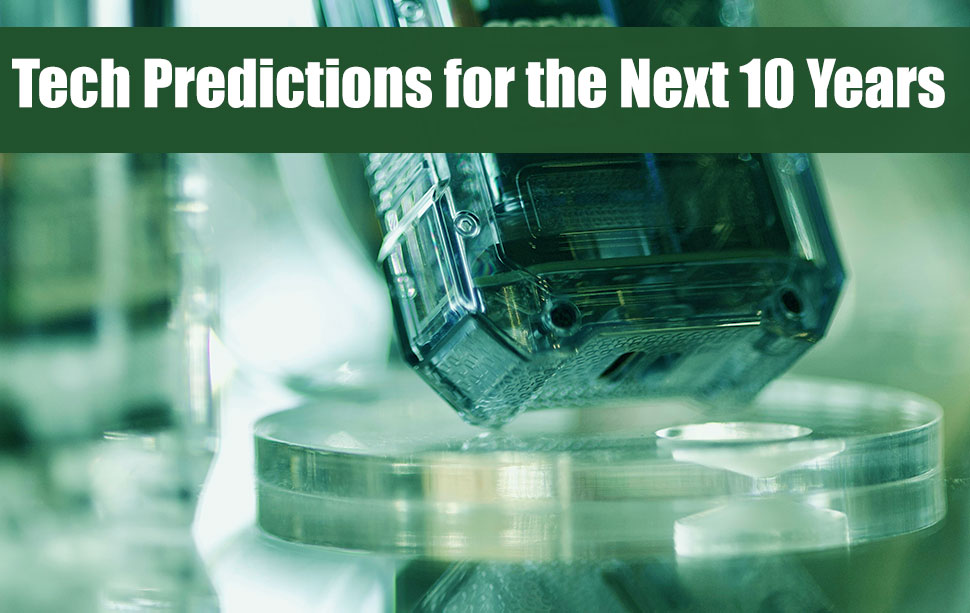Introduction to Technological Advancements
The last few decades have witnessed an unprecedented acceleration in technological advancements, fundamentally reshaping the fabric of society. From the rise of the internet in the 1990s to the proliferation of smartphones in the 2000s, we have become accustomed to a level of connectivity and convenience that was once unimaginable. These advancements have not only transformed the way we communicate but have also revolutionized sectors such as education, healthcare, and transportation. As we stand on the cusp of further innovations, it is crucial to reflect on how these trends have shaped our current technological landscapes and consider what the next decade may hold.
The significance of foresight in technology cannot be overstated. Accurate predictions about technological developments allow businesses and individuals to adapt to changing environments and seize new opportunities. As we observe emerging trends, such as the growth of artificial intelligence, quantum computing, and the Internet of Things (IoT), it becomes evident that today’s innovations are merely stepping stones to tomorrow’s breakthroughs. By analyzing past trends, we can begin to identify patterns that may inform our expectations for the future.
This exploration of future predictions serves several purposes. First, it allows stakeholders to understand the implications of technological evolution on their respective fields, whether in business, healthcare, or education. Second, it highlights the areas where investment and research could yield significant returns. Lastly, it fosters an awareness of the societal changes that may arise as technology continues to evolve, including implications for privacy, security, and workforce dynamics. In this rapidly changing landscape, staying informed about potential advancements will empower individuals and organizations to navigate the complexities of the future effectively.
Predictions in Artificial Intelligence and Automation
Over the next decade, the landscape of artificial intelligence (AI) and automation is poised for transformative advancements that will permeate various aspects of daily life and industries. One of the most anticipated trends is the increasing integration of AI technologies into everyday tasks. From smart home devices to AI-driven personal assistants, consumers are expected to experience a more seamless interaction with technology. This evolution promises not only to enhance convenience but also to improve the efficiency of routine tasks.
Machine learning, a subset of AI, is expected to experience significant improvements, enabling systems to learn and adapt at unprecedented rates. As these technologies become more sophisticated, their applications will diversify, extending into fields such as healthcare, finance, and transportation. For instance, predictive analytics in healthcare could lead to more accurate diagnoses and personalized treatment plans. In finance, enhanced algorithms can streamline risk assessment and fraud detection, increasing security and reliability.
However, these advancements raise vital questions regarding the dynamics between automation and the job market. While AI and automation can increase productivity and reduce operational costs, there is a growing concern about their impact on employment. Industry experts predict that certain job roles may become obsolete; however, they also assert that new job categories will emerge, necessitating a skilled workforce adept at collaborating with AI systems. This shift highlights the importance of education and training programs that focus on AI literacy and technical expertise.
As we look forward, it is crucial to balance the benefits of AI and automation with potential societal repercussions. Policymakers, businesses, and educational institutions must work together to navigate these changes, ensuring that technological progress translates into positive outcomes for individuals and society at large. By embracing AI and automation thoughtfully, we can forge a future that harnesses their potential while mitigating disruption in the labor market.
The Future of Connectivity and the Internet of Things (IoT)
As we look toward the next decade, advancements in connectivity will play a pivotal role in shaping various aspects of our lives. Central to this progression is the evolution of 5G technology, which promises to revolutionize wireless communication by offering faster speeds, lower latency, and increased capacity. With an infrastructure capable of supporting a multitude of connected devices, 5G will serve as a crucial backbone for the future of the Internet of Things (IoT). This new standard for mobile connectivity will facilitate seamless communication between devices, enabling them to work together more efficiently than ever before.
The growth of IoT is already evident, with smart devices becoming ubiquitous in homes, workplaces, and across industries. In the coming years, the interconnectedness of these devices will enhance efficiency and productivity. For example, in the manufacturing sector, IoT-enabled machinery can monitor performance in real-time and optimize operations, reducing downtime and resources. In consumer spaces, smart home devices can adapt to user preferences and improve energy consumption, contributing to eco-friendly living. These innovations exemplify how IoT will revolutionize both personal and professional environments, fostering a more interconnected society.
However, the rapid expansion of connectivity through 5G and IoT comes with potential challenges. Security and privacy concerns are paramount as more devices connect to the internet, creating a larger attack surface for cyber threats. Ensuring robust security protocols will become essential to protect sensitive information and maintain consumer trust. Moreover, regulatory frameworks will need to adapt to address the implications of widespread data generation and usage that the IoT entails. Ultimately, while the future of connectivity is poised to bring transformative benefits, it will also demand careful consideration of the associated risks and challenges to fully harness its potential.
Emerging Technologies Shaping Our Future
As we look ahead to the next decade, several emerging technologies are poised to reshape our world significantly. Among these, quantum computing stands out as a groundbreaking advancement. Unlike traditional computing, which relies on binary bits (0s and 1s), quantum computing leverages quantum bits or qubits, allowing for incredibly complex calculations at unimaginable speeds. This technology holds the potential to revolutionize sectors such as cryptography, material science, and drug discovery, thereby fostering innovation in various fields.
Another area of remarkable progression is biotechnology. In recent years, biotechnological innovations have led to significant improvements in healthcare. Techniques such as CRISPR gene editing promise to eradicate genetic disorders and enhance agricultural productivity. As biotechnology continues to advance, it may lead to personalized medicine tailored to individual genetic profiles, significantly improving treatment outcomes and efficacy.
Augmented and virtual reality (AR/VR) technologies are also expected to become more pervasive over the next ten years. These immersive technologies are transforming sectors such as education and entertainment by offering interactive experiences that promote engagement and learning. In educational settings, AR/VR can provide virtual field trips, lab simulations, and visual aids, making complex subjects more accessible to students. Additionally, in the entertainment industry, these technologies offer new ways for consumers to experience content, creating more engaging and memorable interactions.
While these emerging technologies present significant opportunities for development and growth, it is essential to consider the ethical implications and societal impacts they may entail. Issues such as data privacy, the digital divide, and the potential for job displacement due to automation must be thoroughly examined. This critical analysis will help ensure that the deployment of these technologies serves society as a whole, promoting inclusivity and ethical standards in their implementation. As we embrace the future, a balanced approach will be crucial in navigating the complexities of these technological advancements.




